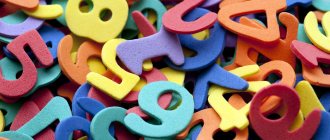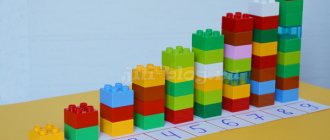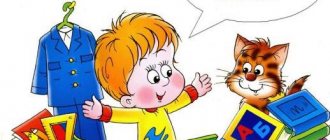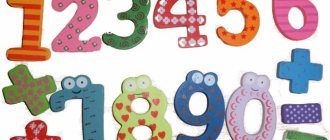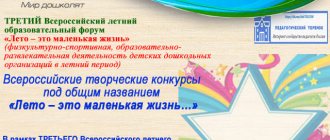How to independently teach a preschool child to count within 10? To do this, it is not necessary to enroll him in expensive training courses. Absolutely any mother can do this, even with a non-pedagogical education. Here it is important to choose an individual approach for each child, so as not to create enormous difficulties for him and for yourself.
There are many different techniques described on the Internet that allow you to teach counting in one way or another. But they all differ in their effectiveness: one will allow you to learn quickly, but difficultly, the other will require you to devote a little more time to it than you would like. And it is important to choose the right time and method so that children not only learn quickly, but are also interested in this matter.
At what age is it better to teach a child to count according to the Federal State Educational Standard?
The first step in learning will be timing. It must be borne in mind that teaching children to count at 1 year old will not be the best idea. You need to choose the moment when the child’s age is already sufficient for such intellectual stress, so as not to simply complicate the situation.
The most optimal age for getting acquainted with the account will be 1.5-2 years. It is at this moment that the child’s mental development will allow him to become familiar with this concept quite easily and in a short time. You should also not forget about individuality: someone can start earlier, someone later. I would like to note that counting and numbers are two different things. It is better to start familiarizing yourself with the numbers between 2 and 3 years.
Important rules for teaching counting to preschoolers
How to teach a child to count?
The very first and most important rule is not to rush to start learning. The parent himself must understand what period of the child’s life will be most suitable for learning. It is not at all important to teach him all the methods of calculation, because when he comes to school, he may encounter completely different methods there. Children should not be forced to learn calculations in preschool if they do not want to. If he shows interest, then it’s time. No interest - learn at school.
The second rule , which is generally required for any undertaking, is gradualism. If parents saw the child’s potential and nevertheless decided to teach him on their own, then they should not demand an instant understanding of the entire meaning of counting. If a child manages to count the number of sticks in his hand, then matching them with the number on paper is quite difficult. This requires the use of abstract thinking, which develops later, closer to 4 years.
Third rule : conduct training in the form of a game. After all, the constant and main interest of children in preschool age is to constantly play. And we all know that what sparks interest is what is learned best. So you need to make a choice between several options: ask your child to count the apples on the dinner table, or count them on the counter while playing shop.
Fourth rule : learn every day. This does not mean that you need to set aside certain hours to sit your child on a chair and force him to count. This means that during any game or walk down the street, you can gently hint to your child that he can count the fingers on his hand. Such simple actions, it would seem, for a parent, but so difficult for a child. If you walk down the street in a sweater, count the buttons; if you play at home, count the number of chairs.
If you follow these simple rules, you can not only teach counting in a fairly quick time, but also arouse interest in it.
Rules
Finally, we will give parents recommendations that will help teach their child to count effectively and calmly:
- Together with your daughter or son, count everything you see around you: birds, steps you climb, steps.
- Say numbers often in normal everyday situations. Tell us what floor you are going up to, how many yoghurts you bought in the store, how many cats or birds you saw on the way home.
- Keep it interesting. Engage, use different methods, conduct classes in a relaxed and fun way.
- Repeat materials already covered more often so that your child does not forget them.
- At the first stages of learning, use counting rhymes. They are well remembered and help to master numbers.
- You can enroll your child in developmental classes. A professional teacher will certainly be able to find an approach to each specific child, attract his attention and choose a suitable teaching method.
- If your child attends kindergarten, ask the teacher what classes are offered and which ones are interesting to your son or daughter.
Are you planning to master counting to 10 with your baby? The methods, rules and tips from this article will certainly help you start and successfully continue your training. Patience and success to you and your children!
What mistakes do parents make when teaching their children to count?
A fairly common mistake parents make is haste. Many people want to quickly teach their children to count so that later they can go out and brag about it to others. This cannot be done. During hasty learning, you can easily skip any stage of thinking development and limit it from other information that is so necessary for children.
There is no need to chase results. If something doesn’t work out at all, postpone the training for six months and let the child be with a free head, without all this knowledge about calculations. If parents need their child to know numbers, the optimal age for this would be 4 years, but not 3, and certainly not 2.
The third mistake of parents: incorrect teaching. The fact is that moms and dads, as a rule, will not know certain teaching methods, even if they read about it on the Internet. All this leads to the fact that learning will jump through the step, and not rise gradually. There are such terrible situations when the baby has not yet really learned numbers, and several examples of addition are given to him at once.
Well, the last mistake: you don’t need to turn learning arithmetic at home into a school lesson. A child can learn mathematics at school even without parents; their task is to give basic knowledge of one or another operation when counting, but not to teach them how to solve examples without errors. When the child is comfortable learning, then you need to study with him, but when you are not in the mood for it, why insist?
When to start training?
Experts believe that the best age to start learning to count is around 3 years old. A three-year-old child actively explores the world and is interested in the properties of surrounding objects. He already understands the essence of the concepts of “little” and “many”, experiments with textures, manipulates things and involves them in actions.
But you shouldn’t expect quick and significant results from a three-year-old child. Firstly, the main activity at this age remains play, so it is unlikely that a child will want to master mathematics in the format of standard classes. Secondly, all children are different. And if one inquisitive and capable child, already at 1.5 years old, is interested not only in children’s hobbies and grasps everything “on the fly”, then another, even at 3-4 years old, cannot concentrate attention on one thing and remember a lot of new information.
Advice! Focus on the abilities and developmental characteristics of your own child, and do not try to fit him into a framework or compare him with peers.
How to teach counting in your head without fingers
How to teach a child to count within 10
After the child has mastered the skills of counting on objects and already has a basic understanding of numbers, and this is approximately 6 years old, then he is ready to begin learning to count in his head. In general, this skill needs to be developed at school, in mathematics lessons, but many parents can also try themselves as a teacher.
Mental arithmetic is an abstract concept, which means it will be very difficult for children to understand. Therefore, training in such an action must be carried out gradually, relying on the same practical actions with objects. In order for a child to easily perceive mental calculation, it is necessary to familiarize him with numbers very well. It is necessary to explain that the number indicates a certain number of certain items.
While your child is counting three objects, you must show him the number 3 on a piece of paper. A good action to reinforce the material would be to ask to show three fingers on your hand. It is necessary to form a certain image so that when the little one sees the number 3, three apples are spinning in his head, which he was counting before.
A good way would be to play with blocks and a box. The box should fit exactly 20 cubes, divided into two rows. As the baby fills the box, he will visually see and remember how much to put and where. Over time, he will develop a skill that allows him to immediately determine how many cubes are missing in one of the rows.
It is necessary to ensure that the child recognizes the number by associating it with the number and quantity of objects, visually representing them. Learning can be considered complete when the child can immediately, without counting or touching objects, count them and name the exact number.
Counting down
With the help of a poem about counting backwards and using toys and objects in a playful way, you can introduce your child to counting backwards from an early age, but after he has mastered counting forward.
There is a plate on the stump, with ten plums lying on it. The squirrel approached the plate and ran away with the plum.
Nine ripe plums in a plate, a mole ran up to the plate, he boldly extended his paw and put the plum in his mouth.
Eight plums on a clean dish. Someone kindly collected them. The nightingale, with a cheerful whistle, pecked the sweet plum.
There are seven wonderful plums on the stump in a blue plate. A flock of lovely butterflies took one with them.
Six left - very few! Hurry forest people! Then a magpie galloped up and took a berry with its beak.
There were exactly five ripe berries. A toothy wolf came running, started counting the berries, and took another one.
Here are four plums. You can’t pass by the smell! Fragrant and beautiful, I took one prickly hedgehog.
There are only three drains left. Who wants to treat themselves to the Sweet Bone inside? A tit took one away!
There is two cream on the plate. Who's reaching for the plate? Let's give one to the owl, and one will remain!
Learning to add and subtract: techniques
Once your little family member has mastered the ability to count objects in his head and immediately, then it’s time to master skills such as addition and subtraction.
Counting with a ruler
One of the easiest ways to learn, but not the most effective for the future. Learning to count with a ruler is quite easy, but it will be a little more difficult to move on to more advanced methods of calculation.
In order to teach children to count with a ruler, it is necessary to explain the following:
- To add two numbers, for example, “3” and “6”, you need to find the number “3” on the ruler and count 6 units (centimeters) to the right. The number the baby will arrive at is “9”. So 3+6=9.
- With subtraction, everything is similar to addition, only you need to move not to the right, but to the left side of the ruler. So, if you need to subtract 3 from 6, then we move to the left by 3 units and get to the number 3.
Subject account
The simplest and most popular way. You need to take the number of objects within which you need to learn to count. Let's say it's 10 apples.
To add 4+2 you need to ask to put two apples aside from the pile. Then add 4 more. Now you need to count the number of apples in a separate group - there will be 6. With subtraction, everything is the same: ask the little one to remove 3 apples from the resulting pile and count the remainder - there will be 3.
Maria Montessori Method
This technique is mastered through the child’s independent learning. All that is needed from an adult is an environment for learning, that is, to provide the necessary objects, using which children themselves will learn mathematics. These items were selected and invented by Montessori herself in the process of developing her methodology.
This method allows you to awaken the mathematical spirit and arouse interest in counting.
Methodology of Sergei Polyakov
To teach this technique, parents will need boxes and cubes. Initially, their number will not exceed 5, but over time it will increase up to one hundred. You also need to print numbers from one to the number of cubes on the pieces of paper.
The idea is simple: take two cubes and sheets of paper with the numbers “1” and “2”. One cube is placed in front of the participant and next to it a piece of paper with a unit, explaining that this is one cube. Immediately after this, a second cube is added, and the number changes to two, and it is explained that there are now two cubes. After this, the child is asked to repeat after the parent.
After the child has completed this test, it is necessary to explain that the box is a small house, and the cubes are its inhabitants. It further shows that one person is at home, and then a second person comes to him. After this, ask the child to answer how many people are in the house now.
After several repetitions, a lid for the box is made - the roof of the house. Now everything is the same: one little man comes to another, but all this is covered with a roof. The child must name the number of people, but not look at them.
As the game progresses, the number of dice increases and increases.
Glen Doman Method
How to teach a child to count using the Doman method? This technique means that learning occurs very early. Or rather, you need to start as early as possible. It is believed that the younger the child, the easier it is for him to perceive information.
To start classes, parents will need to prepare 100 cards measuring 27x27 centimeters. On each of them it is necessary to depict dots with a diameter of no more than 2 cm from 1 to 100. It is necessary to explain to the student how many dots are on which card. It is necessary to voice the number of points on the first five cards in a loud and clear voice, spending no more than 15 seconds on each of them. You need to study this five 3 times a day.
The next day, add five more cards to the existing set with the number of dots in order. You will get 10 sheets, each with dots from 1 to 10. And so add five every day.
After the child has begun to master the concept of “quantity,” you can begin to study addition and subtraction. For greater simplicity, you can prepare three more leaves with a plus, a minus and an equal sign. Now you need to lay out the necessary cards in the right order, for example: five (leaflet with 5 dots) plus (leaflet with a plus) two (two dots) equals (equal sign) seven (seven dots). It's the same with subtraction.
Mental arithmetic
How to teach a child to count using the “Mental Arithmetic” method? The basis of teaching counting using this method is training with the Abacus. This is a kind of abacus, the knuckles of which are located in a certain way. The technique is quite complex, but it allows children to learn how to count huge numbers in their heads.
One of the basic rules: you need to count from left to right. That is, not in the way many are used to. You need to remember that the upper bones of the Abacus are equal to the value “5”, and the lower ones are equal to “1”. All columns are divided into units, tens, hundreds, thousands and millions.
For example, just take the example 1+2. It is necessary to pick up 1 domino on the outermost column, indicating one, and then two more and count how many you get.
For more complex examples, for example, 11+23, you need to divide the number into tens and ones. After this, put 1 domino in the right column, and then 3 more. You get 4 units. Next, in the column indicating tens, you need to take 1 die, and then add 2 to it. After that, add the tens and ones (simply combine the resulting numbers next to each other if the number is no more than 9) and you get 34.
With subtraction, everything is similar, only the dice will not have to be raised up, but lowered from all of them.
You can see a detailed description of developmental methods for preschool children in our article HERE.
Singapore method
This method lies in its special form: during the lesson, students collect concepts and formulas, which, like a construction set, are assembled into one lesson. They are called structures.
How to teach a child to count using the Singaporean method? You can’t talk about this in one article. There are about 250 such methods in total, all of them allow children to show independence in learning to count.
Memorizing tables
This method is entirely based on memorizing addition and subtraction tables. All of them are similar to everyone’s favorite table of squares, which served as a cheat sheet for almost everyone. Only here no one will have this table at hand, they will have to learn it.
It is believed that if a student learns such a table at least up to 20, then later he will understand the whole essence and will be able to add even large numbers. In general, the method is “forward”.
Games and exercises that teach counting to preschoolers
How to teach a child to count while playing? There are many different educational games for preschool children. They all have their own meaning and genre, but the essence is the same - to teach children to count. Here are some of them:
- Put the same amount - I think the name speaks for itself;
- Show as much;
- Find yourself a place - you will need a lot of space and children to play. The hoops are placed on the floor, and inside them are pieces of paper with numbers. Players move around the room, and at a signal they stand around the hoop in the same number as the number in the hoop;
- Puzzles with numbers written on them. They need to be laid out in the correct order.
In any case, the most banal and easiest exercise would be to use counting with your baby in everyday life. If you see flowers in a flowerbed, count them. You can count absolutely everything, even your fingers.
How to develop a child's interest in counting
No child will like it if their parents force them to count in the evenings. But all children like games. Try to make a game out of the activity that will be interesting to both you and the baby.
How to teach a child to count? Also, an effective way would be to reward each correct action. Naturally, you can’t spoil anyone, but reward them for good work - why not? Do not forget to create a favorable atmosphere for learning, because if the child enjoys doing this, he may not even notice that a training program has been made for him.
How to understand that your child is ready to learn
It is important to start developing mathematical skills in a timely manner: not too early, but not too late. But how do you know when it’s time? Keep an eye on the child. First, try to master the concepts of “one/one”, “few”, “many”. Point to specific objects, such as stuffed animals, cars, or blocks.
At home, on walks, at a party, invite your daughter or son to analyze the world around them. For example, ask how many cars the child sees: one, two, many, few. Offer to count trees, steps, birds, cats. If the baby remembers new information and is also actively involved in the learning process, then the start of learning to count at this age will most likely be successful and productive.
